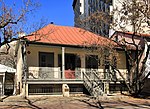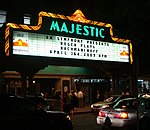The Council House Fight, often referred to as the Council House Massacre, was a fight between soldiers and officials of the Republic of Texas and a delegation of Comanche chiefs during a peace conference in San Antonio on March 19, 1840. About 35 Comanche men and women under chief, Mukwooru (aka Muguara) represented just a fraction of the Penateka band of the southern portion of the Comanche tribe. He knew he had no authority to speak for the Southern tribes as a whole and thus, any discussions of peace would be simply a farce. However, if Mukwooru could re-establish a lucrative trade with the San Antonian's perhaps a peace, by proxy, could be established. Just as the Comanche had done had been done for centuries in San Antonio, Santa Fe and along the Rio Grande River. They would rob one settlement and then sell to the other.
On March Chief Muguara brought in some trade articles and horses as well as an abused and tortured 14-year captive white girl named Matilda Lockhart that they had kidnapped and hoped that they would fetch a better price for her ransom, than what they received from nine year old, James Putnam/Putman just two weeks before. If the price was right, they may soon deliver over more captives.
The remainder of the Penateka Comanche were, at the time, at Enchanted Rock with thirteen other captives that they planned to sell one by one to fetch better prices.
The Southern Comanche had broken the 1835 as well as the 1838 treaty traveling hundreds of miles down the Colorado River and Guadalupe Rivers into the Texas settlements to steal horses and abduct children and had no intention of stopping this lucrative market economy that gave their young men a purpose. The various bands of the Southern Comanche had about thirty white captives and sixty Mexican captives, all abducted in recent raids.
The council at the courthouse in San Antonio began when the 30 Comanche men were invited into a courthouse in downtown San Antonio, on the east side of the square east of San Fernando Cathedral, facing it. The men brought their women who concealed several tomahawks under the blankets they held. The men left their rifles with their horse handlers out front and unstrung their bows and walked in as a procession and sat on the floor facing the table of Texian representative including judges and Colonels. Captive Matilda Lockhart was delivered over, and when the other captives were not, and when they asked for a better price, the Texans took the Comanche delegation as hostages for a forced prisoner exchange. Soldiers from a nearby building entered the premises, the Comanche began to stab the Texans. The council ended with 12 Comanche men shot to death inside the Council House and 23 others killed outside. Two elderly men and two dozen women were held captive in order to obtain an exchange for the remaining Texan children held by the Comanche.












